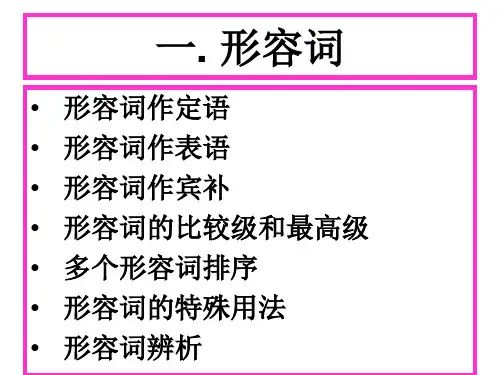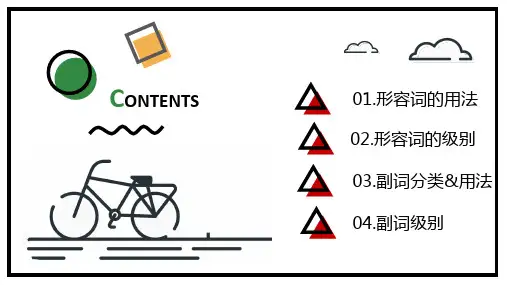三、作前置定语和后置定语意义不同的形容词
present, proper, due, concerned, involved, adopted, used, elect, responsible, opposite
[作前置定语]目前的,现在的
1. present
[作后置定语]在场的,出席的
The present situation is excellent. The employees present should vote on the issue.
8. elect
[作前置定语]挑选的,精选的 [作后置定语]当选的,选出尚未就职的
This elect body (选出的机构)meets once a year. The president elect takes over in May.
9. responsible [作前置定语]有责任心的,认真负责的
四、可用作副词的形容词
有些形容词有时可作副词,常见的有dark, dead,
wide, right, bitter, white, new, tight, pretty, damned, precious 等。
深红色 极冷 大开的 非常高兴
dark red dead cold wide open right glad
世俗的 学者气的 苍白的
高明的, 熟练的
六、表示肯定意义的too…to结构
“too…to…”结构本来表示的是否定含义,但是如果 前面有only, all, but, not, never, simply, just等词,too 后面是eager, anxious, pleased, kind, willing, apt, ready, glad, quick, inclined等形容词时,这是这个结构表示 肯定概念。










